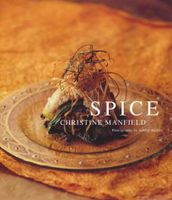Advertisement
Published 1999
A large equatorial tree originating in the Moluccas produces an apricot-like fruit that in turn provides us with two spices — mace and nutmeg. Mace is the aril or seed covering that encases the nutmeg seed inside the fruit. It looks like a red lacy glove, but the colour fades to a dusty orange-yellow when the aril is sun-dried after it has been removed from the nutmeg seed. Mace has a perfumed, sweet scent and a clean, bitter flavour, completely different from that of nutmeg. Mace is best purchased as whole arils (often referred to as blades) and ground as required as the flavour starts to diminish once the whole spice is ground. Mace is used in spice pastes and desserts in India, Malaysia and Indonesia. In French and European cooking it is used to flavour béchamel or onion sauces, cheese soufflés and cheesecakes. Long considered an aphrodisiac in Asia and the Middle East, mace is used to relieve rheumatism in Oriental medicine. Available: widely (look for blade mace in Indian or gourmet food stores).


